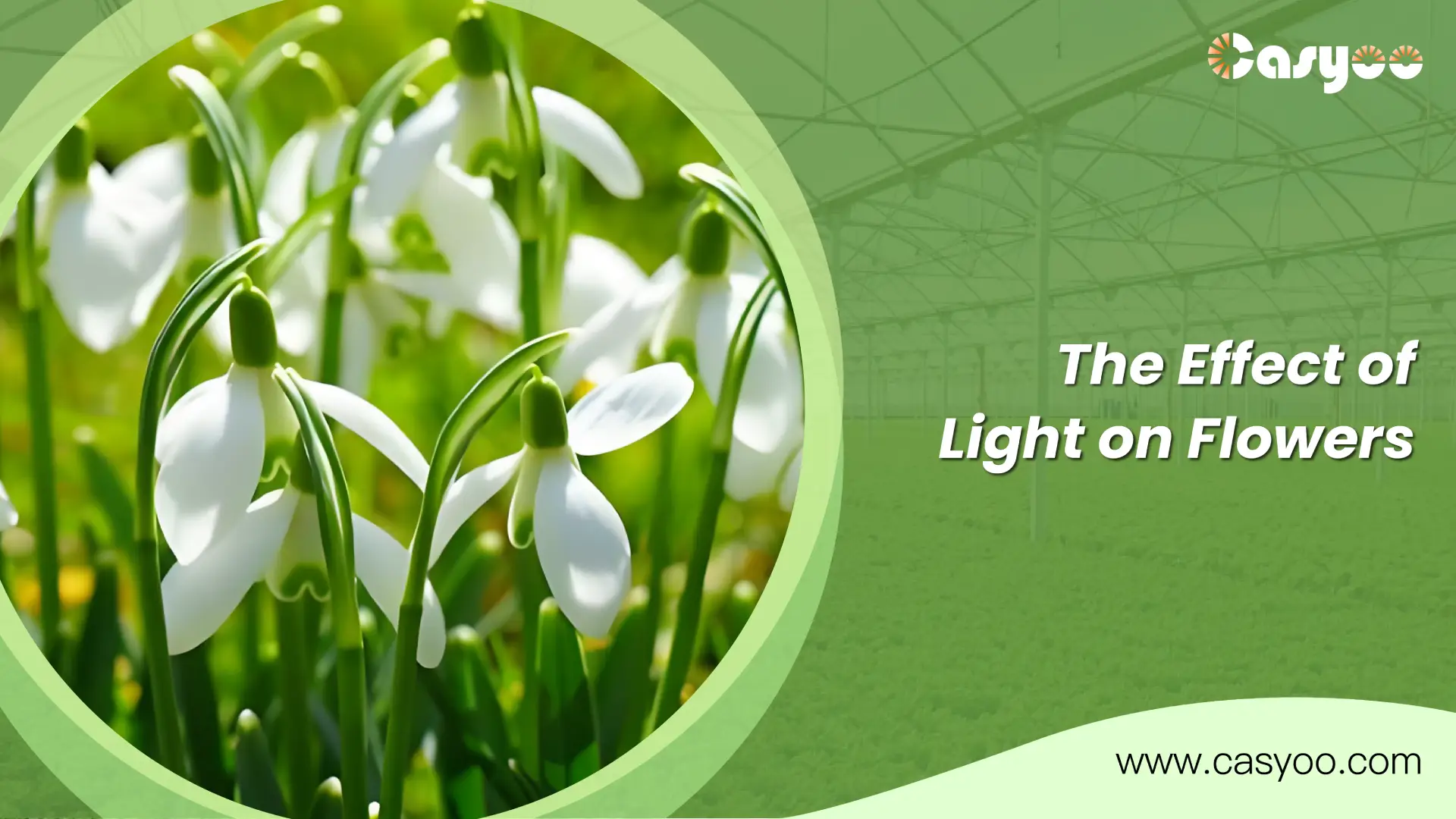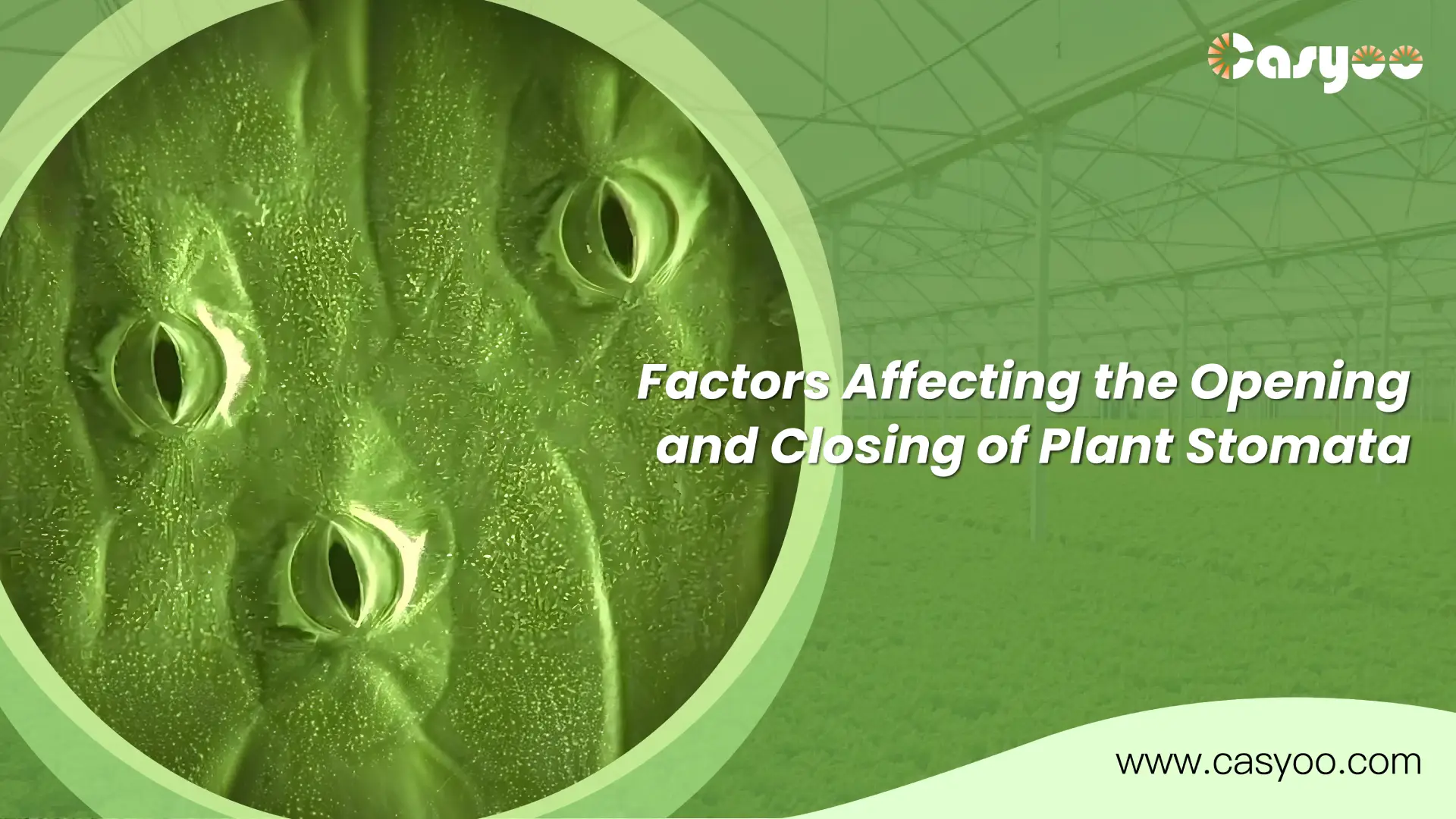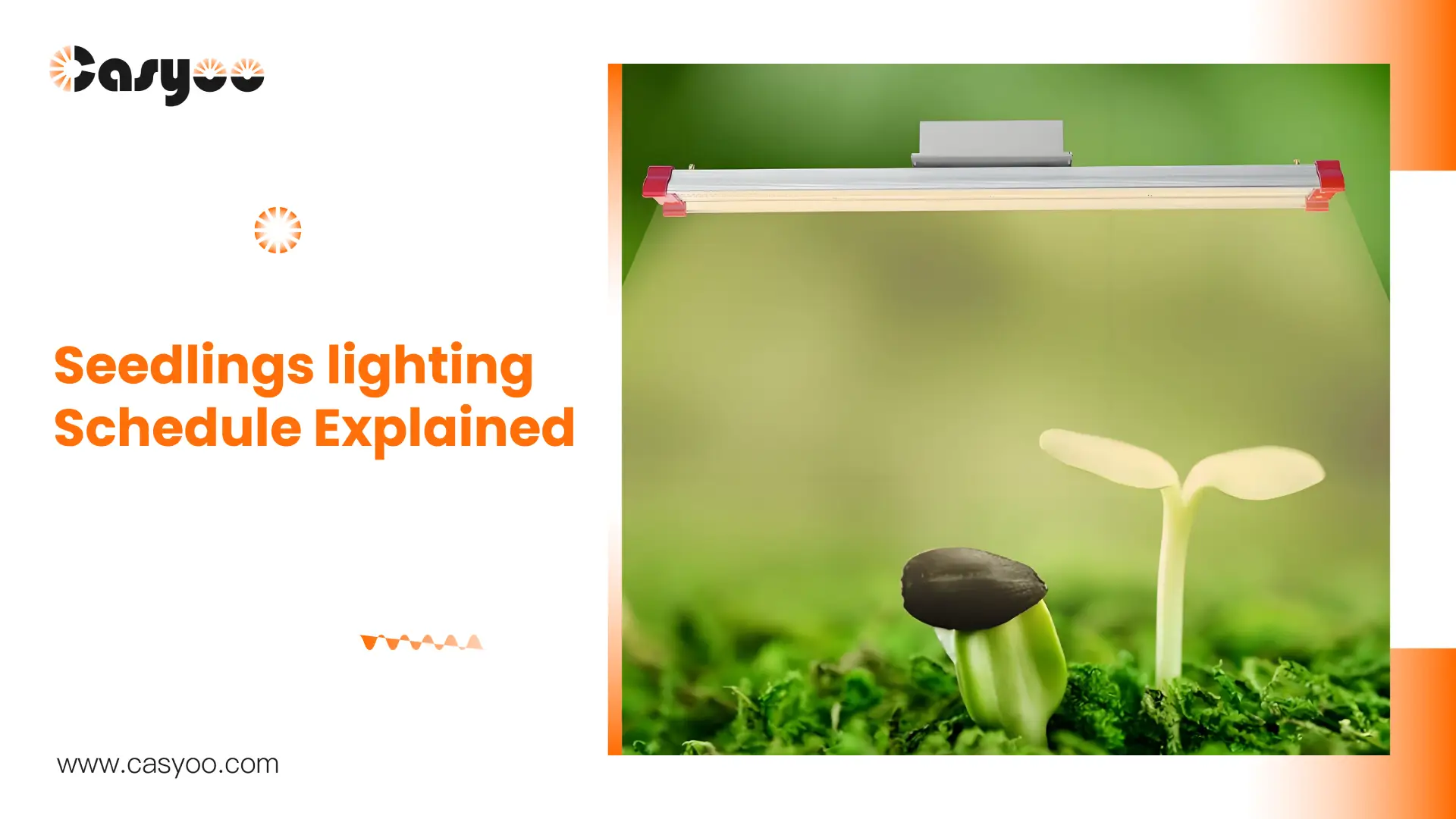
The Effect of Light on Flowers
Light is one of the important factors affecting the growth and development of flowers. It is a necessary condition for
We have collaborated closely with industry and research professionals for more than 17 years to offer your plants full-spectrum LED grow light at a competitive price. Whether you’re growing flowers, vegetables, or fruits, you can adjust the intensity and spectrum to create the ideal growing conditions for any plant type with our LED grow lights. Everything is made in-house at our factory, including LED boards, enclosures, controls, and final assembly. All our products are certified by CE, ROHS, BSCI and UL.
Categories
Wattage

Humidity may be a problem in greenhouses. Rest assured, our lights are designed with an IP65 rating so they won’t be damaged. Let Casyoo help your business get consistent results.

Casyoo offers high-technology LED lighting solutions for vertical farming. You can yield more with our adjustable full spectrum.

Plants grown indoors need adequate light to grow well. Casyoo full spectrum light helps you develop more robust plants with lower electric bills.
Casyoo full spectrum light covers white, blue, red, and IR (3000K, 5000K, 660nm, and 760nm) spectra. This balance spectrum benefits your crops’ whole growth cycle, promoting robust vegetative growth and abundant buds.

Our LED grow light uses the industry-leading Samsung and Osram chips, which have a higher PPE than other LEDs. This results in increased yields and lower electricity bills.
Casyoo LED grow lights have a detachable power supply that can be mounted remotely on the side of a rack or on a nearby wall. The large sections of solid aluminum heat sinks dissipate heat quickly and silently.
Can adjust brightness from 0 to 100% according to the various growth stages of plants .
Can connect multiple grow lights so that you can control multiple lights’ dimming simultaneously from a single unit.
Have an excellent 50,000 hours lifespan and a 3 years warranty.
Power: 30W / 60W / 90W / 100W / 150W / 200W / 300W / 320W / 400W / 480W / 500W / 600W / 640W / 800W /1000W
Input voltage: AC100-277V 50-60Hz
Rated power factory: >90%
Light distribution: 120º
Thermal management: Passive
PPFD efficacy: 2.8 µmol/J
Spectrum: Full spectrum +760nm IR (Blue, UV available upon request)
Mounting height: 6-36″ (152-914mm)
Dimmable: 0-10 dimmer / smart controller
Daisy chainable power: Yes
Daisy chainable dimming: Yes
Smart controller compatible: Yes
Ingress Protection: IP65
Warranty: 3 years
Certifications: CE, FCC, RoHS, UL
Contact us to request a free lightplan to hepl you see your needs.

Full spectrum +760nm IR (Blue, UV available upon request)

Several power options for choice

Dimming, adjustable spectrum and daisy chain function.

Customizable color and shape of lamp

OEM/ ODM accepted

2.8 μmol/J

As a leading one-stop-shop OEM/ODM LED grow light manufacturer, we can offer customized solutions in sizes, wattage, spectra, and designs based on your designs and requirements. Our services range from purchasing, quality management, cost improvement, product design, manufacturing, to assembly, and other value-added services. get to know our advantages!
• OEM/ODM Acceptable
• No MOQ
• Fast Delivery
• Customization
• Competitive Prices
• CE, FCC, RoHS, UL Certified
• 17+ Years of Experience

Light is one of the important factors affecting the growth and development of flowers. It is a necessary condition for

Stomata of Plants Plant stomata is essentially the abbreviation of stomatal complex, which is usually composed of a pair of

Why does the growth of seedlings require light? The lighting requirements of seedlings vary by species, but generally speaking, most
Yes, all of our LEDs are full spectrum lights.
Not at all. Traditional full spectrum grow lights do not release a substantial quantity of UVB radiation, in contrast to natural sunlight, which comprises a broad spectrum of UV radiation, including UVB rays. The main reason that causes tanning is UVB radiation. The skin does not create the melanin required for tanning to happen in the absence of UVB radiation.
Yes. The use of additives and phosphors in the manufacturing process makes LED grow lights emit low levels of UV radiation, mainly UVA. Rest assured, this level of UV radiation is safe and can contribute to healthy plants. In addition, LED lights emit very little UVB, which is far below the safety limit.
LED grow lights that emit UV rays and blue light are associated with eye damage. In fact, If we look directly at the light, any light would be bad for our eyes, but it is easily avoided by not staring at the fixture.
The combination of red and blue LEDs gives the fixture a purple-looking light. These two colors are the key to robust plants.
LED grow lights emit little heat. They will not get hot enough to cause a fire. But as electrical devices, they can be a fire hazard if they're poorly built or installed. Though the risk is not high, you still need to take measures to reduce the risk.
LED grow lights are completely safe. They won’t harm people or the environment because they are 100% recyclable.
Yes, all light emits heat, whether it’s from diodes, bulbs, or stars like our sun. But LED grow lights can produce up to 90% less heat than fluorescent or HID lights.
No. Plants cannot be exposed to 24 hours of light, be they long-day plants or short-day plants. 24 hours of light will stress your plants, leading to stunted growth.
No one is better than the other, it depends on your growing conditions and goals. If you are looking for the most eco-friendly lighting option and have access to ample light, then sunlight is the way to go. However, if your plants are limited by location or season, or if you want more control over the growing conditions, LED grow lights are the best choice.
You can use any LED lights to grow plants in the short term or low-light plants. Your plants are certain to grow, more or less. You cannot, however, guarantee that your plants will grow healthily. After all, plants require specific light spectra for photosynthesis, and normal LED lights do not emit the required wavelengths to support plant growth.
There is no best light spectrum because each color supports plant growth in its own way. They are all essential. That being said, many growers use red and blue light because plants absorb them most.


